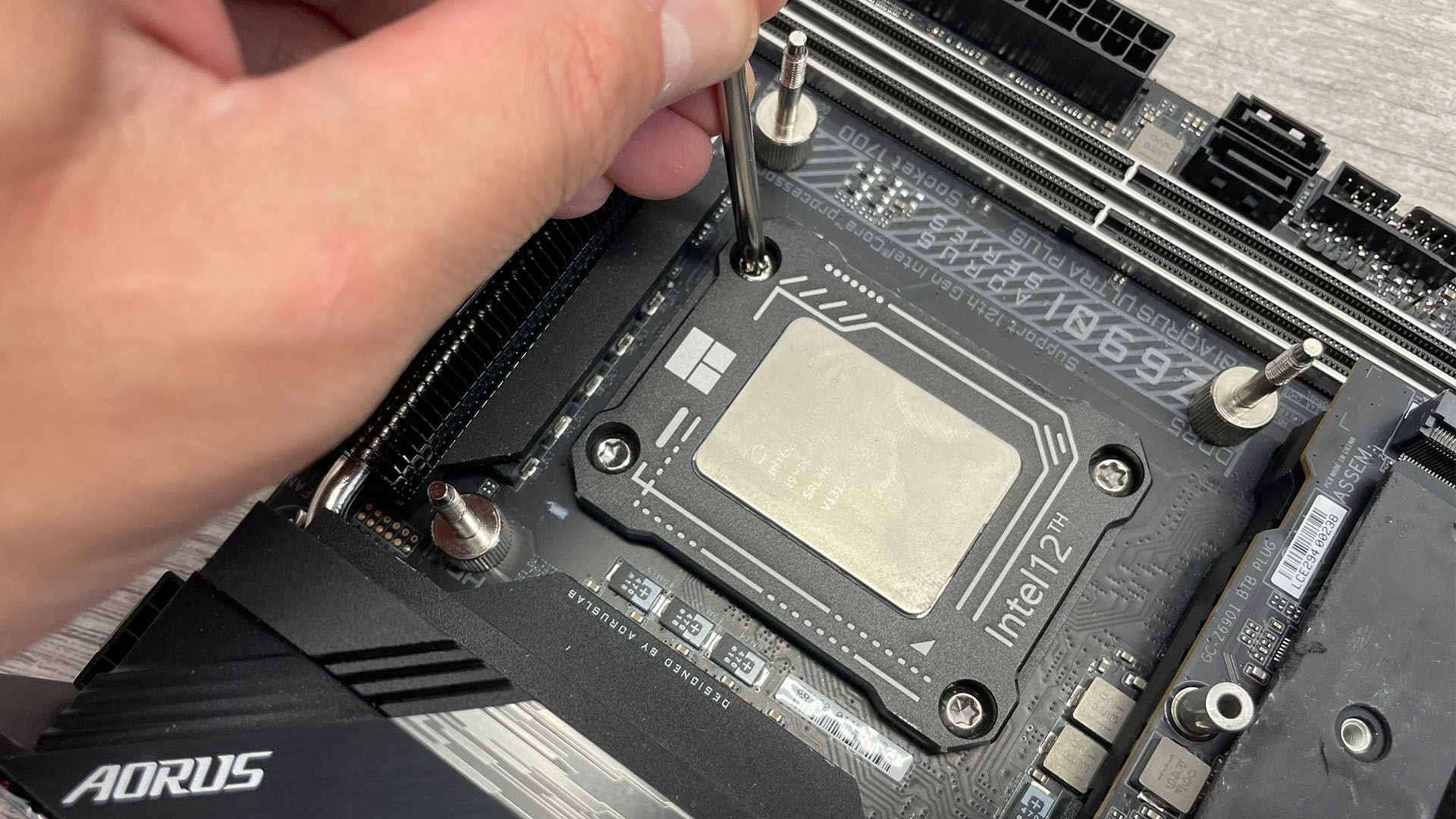There’s a disturbing trend with PC hardware at the moment. It involves quite a few components, such as coolers, CPUs, and motherboards, and what seems to be an endless need to modify certain parts of them in order to get the best cooling performance, or in some cases just to get them to work properly.
The most obvious one is delidding your CPU, where you remove the metal heatspreader from the top of the CPU and replace the thermal contact between the CPU die and the metal. As we found in the past with the infamous cheap thermal paste that Intel used to replace the solder between the heatspreader and CPU core, tweaking your CPU yielded huge thermal benefits.
Replacing the cheap thermal paste with a high-performance compound could result in CPU temperatures falling dramatically, either due to the quality of the paste, or the existence of small gaps between the CPU die and the heatspreader. This mod could turn a hot-running CPU that no traditional cooler could tame, even at stock speed, to a CPU with decent overclocking headroom. It could even run cooler once delidded and overclocked than it did at stock speed in its original configuration.
For PC hardware enthusiasts, delidding has, unfortunately, been a necessary modification for not one, but several generations of Intel CPUs. We’ve covered the process several times on various CPUs, although Intel has recently moved back to soldered CPUs and mostly better thermals, assuming all other factors are equal. Sadly, though, there’s another fix for Intel, this time relating to CPU socket mounting pressure on its LGA1700 CPUs, such as the Intel Core i9-12900K.

Intel’s LGA1700 socket is elongated, and the increased leverage on the socket mechanism appears to be applying too much pressure to the CPU. We’ve seen at least one unexplained bent CPU in our own labs, and owners are also reporting numerous instances of pressure or other forces bending their heatspreaders too. This can result in higher CPU temperatures, which can be a real issue when Intel’s 12th-gen CPUs don’t exactly run cool in the first place.

Thankfully, this situation has been a little better with AMD CPUs, but this doesn’t mean AMD has been completely immune to outside influences. The move to its chiplet design with Zen 2 meant that components under the hood were laid out very differently to Zen and Zen+ CPUs. So differently, in fact, with core complexes and I/O dies spread all over the CPU substrate, that coolers which performed well with previous Ryzen CPUs sometimes required you to adjust the contact plate to get decent performance on the newer CPUs.
German overclocker Der8auer produced the OC bracket to fix this issue, and when we tested it we found it resulted in up to a 5°C drop in load temperatures. Admittedly, this was nowhere near as big a drop as you get from delidding, but I didn’t see any cooler manufacturers taking advantage of this situation, by offering slightly tweaked versions of existing coolers, with an adjusted mount to cut temperatures.

In addition, a while backTwitter user @Madness727 managed to delid his AMD Ryzen 7 5800X3D, which most people have found to be particularly hot-running as a side effect of its 3D V-Cache. He found the load temperature dropped by up to 10°C after replacing the CPU’s stock solder with Thermal Grizzly Conductonaut liquid metal paste.
All this leaves me in two minds. Firstly, I always love tinkering and optimizing my hardware. It’s part of why I love PCs, especially the cooling and overclocking aspects of them. You might only gain a few degrees here and there for a few hours’ work, but it’s fun and rewarding, and can even be a little therapeutic too, even if you have to spend $10 on fancy thermal paste or a bit more on delidding tools or other gadgets.
However, the other part of me feels that many of these issues shouldn’t be left to consumers to fix. This is especially true with Intel’s delidding and bending-related issues. The temperature drops that resulted from the former were unacceptable, and Intel should have spent more on R&D to fix the issue in the first place. You can see how to protect your 12th-gen or 13th-gen Intel CPU in our full guide on how to stop your LGA1700 CPU bending.
Have you had to resort to dismantling your hardware in order to improve performance, or just to get it to hit its stated boost clock? Tell us all about it on the Custom PC Facebook page, via Twitter, or join our Custom PC and Gaming Setup Facebook group and tap into the knowledge of our 390,000+ members.
